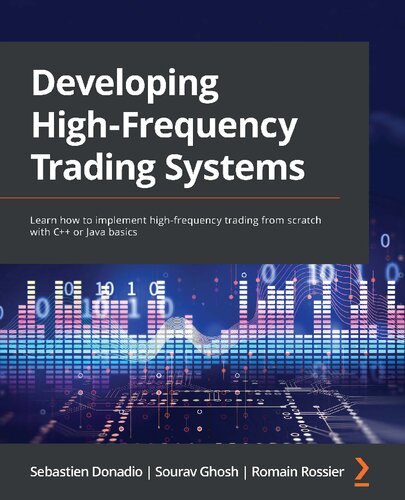دانلود کتاب Developing High Frequency Trading Systems: Learn how to implement high-frequency trading from scratch with C++ or Java basics - Original PDF
Author:
Sebastien Donadio, Sourav Ghosh, John Rizzo, Romain Rossier
0 (0)
توضیحات کتاب :
Use your programming skills to create and optimize high-frequency trading systems in no time with Java, C++, and Python Key Features • Learn how to build high-frequency trading systems with ultra-low latency • Understand the critical components of a trading system • Optimize your systems with high-level programming techniques Book Description The world of trading markets is complex, but it can be made easier with technology. Sure, you know how to code, but where do you start? What programming language do you use? How do you solve the problem of latency? The Developing High-Frequency Trading Systems book answers all these questions. This practical guide will help you navigate the fast-paced world of algorithmic trading and show you how to build a high-frequency trading system from complex technological components, supported by accurate data. Starting off with an introduction to high-frequency trading, exchanges, and the critical components of a trading system, the book quickly moves on to the nitty-gritty of optimizing hardware and your operating system for low-latency trading, such as bypassing the kernel, memory allocation, and the danger of context switching. Monitoring your system’s performance is vital, so you’ll also get up to speed with logging and statistics. As you move beyond the traditional high-frequency trading programming languages, such as C++ and Java, you’ll learn how to use Python to achieve high levels of performance. And what book on trading would be complete without diving into cryptocurrency? By the end of this book, you’ll be ready to take on the markets with high-frequency trading systems. What you will learn • Understand the architecture of high-frequency trading systems • Boost system performance to achieve the lowest possible latency • Leverage the power of Python, C++, and Java to build your trading systems • Bypass your kernel and optimize your operating system • Use static analysis to improve code development • Use C++ templates and Java multithreading for super-low latency • Apply your knowledge to cryptocurrency trading Who This Book Is For This book is for software engineers, quantitative developers or researchers, and DevOps engineers who want to understand the technical side of high-frequency trading systems and the optimizations that are needed to get to ultra-low latency systems. Prior experience working with C++ and Java will help you grasp the topics covered in this book.
سرچ در وردکت | سرچ در گودریدز | سرچ در اب بوکز | سرچ در آمازون | سرچ در گوگل بوک
3,763 بازدید 5 خرید










